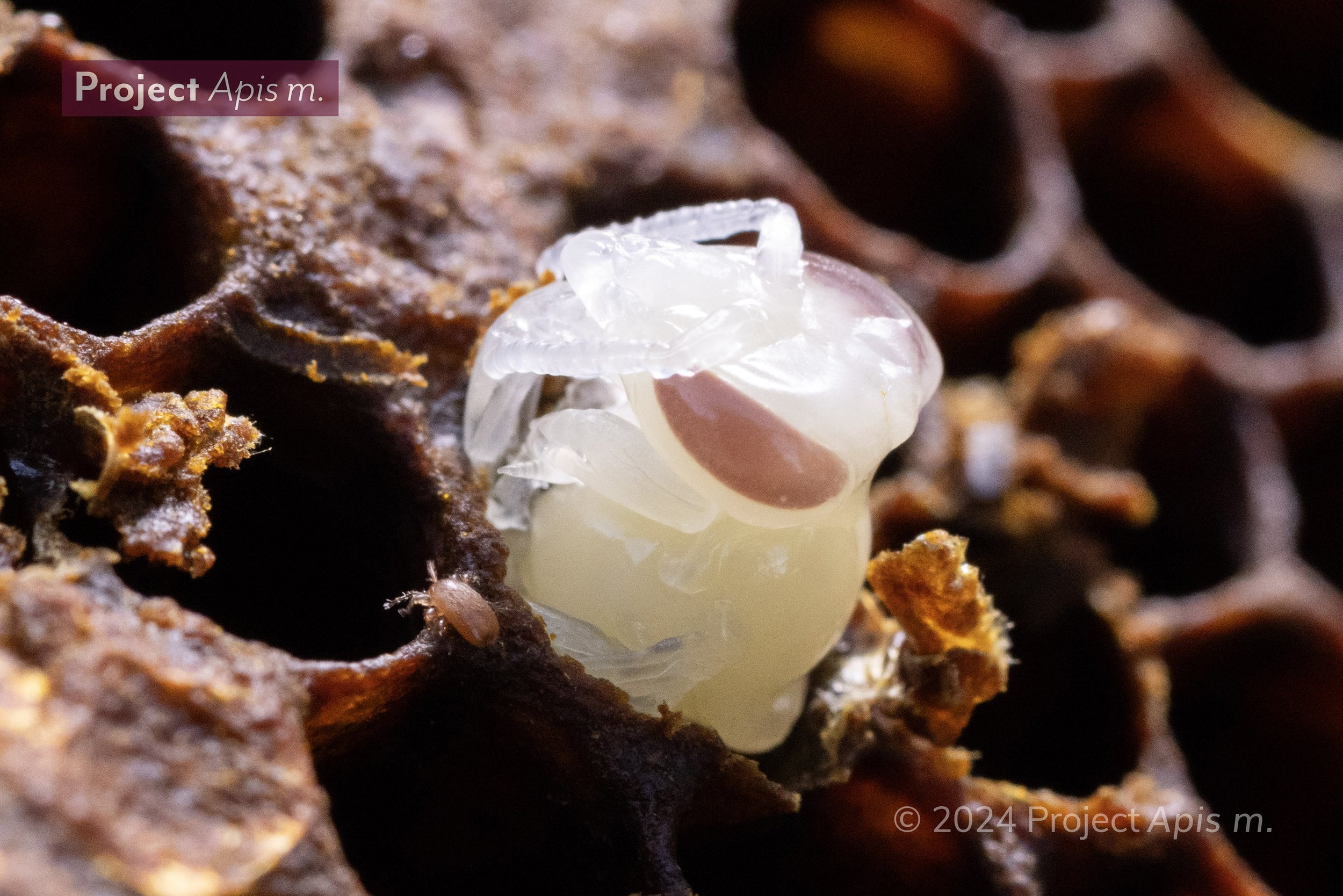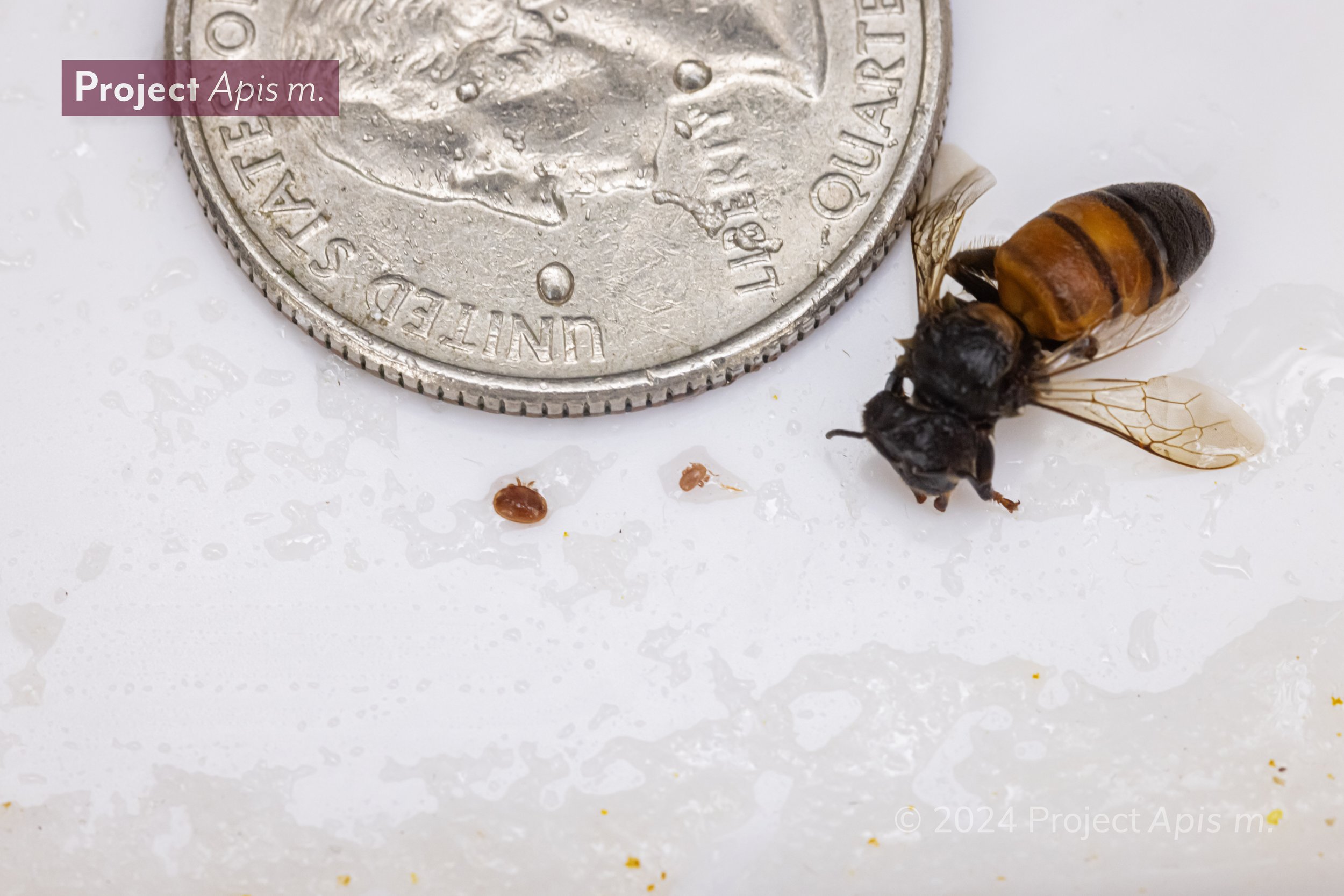Tropilaelaps Mites
Currently not detected or known to exist in North America
The full extent of Tropilaelaps mite expansion is not fully known. Recently, there has been a lot of speculation about its whereabouts; however, much of this information has not been published in the scientific literature or vetted by government authorities. Auburn University and Apiary Inspectors of America have reviewed all the published literature to determine the published extent of T. mercedesae associated with A. mellifera. Please visit the distribution page for more detailed information.
Tropilaelaps mercedesae have become an increasingly worrisome pest globally of Apis mellifera honey bees due to its recently detected range expansion.
Like Varroa destructor (Varroa), T. mercedesae feeds on developing brood of honey bees causing deformities and spreading diseases. Unlike Varroa, T. mercedesae do not require a phoretic period in their life cycle and therefore are able to move directly out of a cell of a newly emerged bee and into another cell with an older larva.
The giant honey bees of Asia (Apis dorsata and A. laboriosa) are believed to be the original hosts of T. mercedesae. A. mellifera introduced to Asia were likely quickly parasitized due to host jumping. T. mercedesae appears to be expanding its range far beyond the historic range of the giant honey bees, and expanding outside of Southeast Asia (distribution map).
Identification and detection of T. mercedesae mites can be difficult due to their small size and fast movement. While visible to the naked eye they are small and can be easily missed even if using traditional Varroa monitoring techniques.
Looking for more information? Additional Tropilaelaps Resources, downloads, videos and more can be found here.
Where are the Tropilaelaps and Varroa in the above image? Click the image to enlarge it. Once you count up the mites, check out how you did here.





